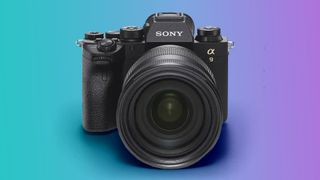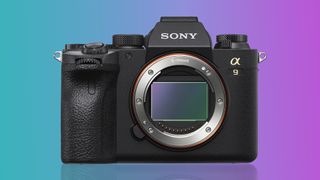Rumored Sony A9 III could be the fastest mirrorless camera yet: here’s what you need to know
Sony Alpha Rumors has been reporting on the Sony A9 III rumors for quite some time now, and recently stated in no uncertain terms that the latest A9 series model will be announced next month.
The groundbreaking A9 series introduced the ‘stacked’ sensor technology we now see in the Sony A1, Nikon Z9 and Z8 and Fujifilm X-H2S; all cameras that offer fast sensor readout and next-level speed. We can therefore expect Sony’s latest speedster, the rumored A9 III, to offer the very best performance for professional sports and wildlife photography.
We can expect the A9 III’s burst shooting to match or surpass the flagship Sony A1, with the latest AI-powered autofocus for subject detection, and without the price tag. Let’s take a quick look at the rumored key features of what could be one of the best professional cameras yet.
Sony A9 III: rumored release date and price
In a recent one Sony Alpha Rumors postthe A9 III was tipped for a release date of early to mid-November.
The A9 II was originally on sale for $4,500 / £4,800 / AU$6,999, which is around 25% less than the launch price of the Sony A1. We certainly hope the A9 III isn’t more expensive than the A9 II, but it could be closer to $5,000 / £5,000 / AU$7,500.
Sony A9 III: Sony A1 standards?
In another post from Sony Alpha Rumors, the Key features listed for the rumored A9 III include an all-new 44MP full-frame stacked sensor with a maximum burst rate of 26fps – presumably using the electronic shutter with full-time autoexposure and autofocus.
A 44MP sensor would be quite a leap forward in resolution over the 24MP sensor in the A9 II – almost matching the 50MP resolution of the Sony A1. Normally there’s a trade-off between resolution and speed, but perhaps, as with the A1, Sony has found a way to offer both.
It remains to be seen whether an increase in resolution would negatively impact the low-light performance of a rumored A9 III compared to the A9 II; but having more pixels to play with is especially useful when you need to crop your photos.
Stacked sensor technology increases the readout speed of the sensor and reduces or eliminates the detrimental effect of rolling shutter – visible when using the electronic shutter instead of the mechanical shutter – meaning action cameras such as the Nikon Z9 and Sony A1 can achieve superior burst speeds using an electronic shutter. However, with a potential resolution increase, the rumored A9 III would struggle to push faster than 30fps without some serious Sony grunt.
Video performance also looks set for a major upgrade, with the A9 III tipped to feature 8K/60p and 4K 120p video. This could make it a real match for a camera like the Nikon Z8 and Z9, and even the Sony A1. If the rumors are true, the A9 III is actually quite similar to the A1, for less money; a bit like how the Z8 compares to the more expensive Z9.
Sony A9 III: other possible updates
The performance of the stacked sensor in improving the readout speed of the sensor is so great that the Nikon Z9 has ditched the mechanical shutter altogether. Could we see Sony follow suit and remove the movable mechanical shutter? It would be a big step.
Speaking of big steps: could Sony also build a vertical grip into the rumored A9 III, just like the Z9? The most likely scenario is a body as small as its predecessor, with an optional battery grip to increase the camera’s size and extend battery life. However, a larger chassis is better able to dissipate the heat generated by recording video for long periods of time, which could make the A9 III very attractive to filmmakers looking for uncompromised 8K video performance. It would also allow room for a larger, longer lasting battery, which could be another way to differentiate the A9 III from the A1.
It would be reasonable to expect an improved EVF from the A9 II. That camera has a 3.69 million pixel display, while Sony’s class-leading A7R V viewfinder has a 9.44 million pixel display – which is a reasonable expectation for a future flagship model. Whatever the EVF resolution, a minimum requirement for the screen is that it does not black out during burst shooting.
Another feature we expect the rumored A9 III to inherit from the A7R V is the AI-powered autofocus chip, to improve the number of detectable subjects in a wider range of scenarios.
Whatever form the rumored A9 III takes, it will be a powerhouse of a camera.



